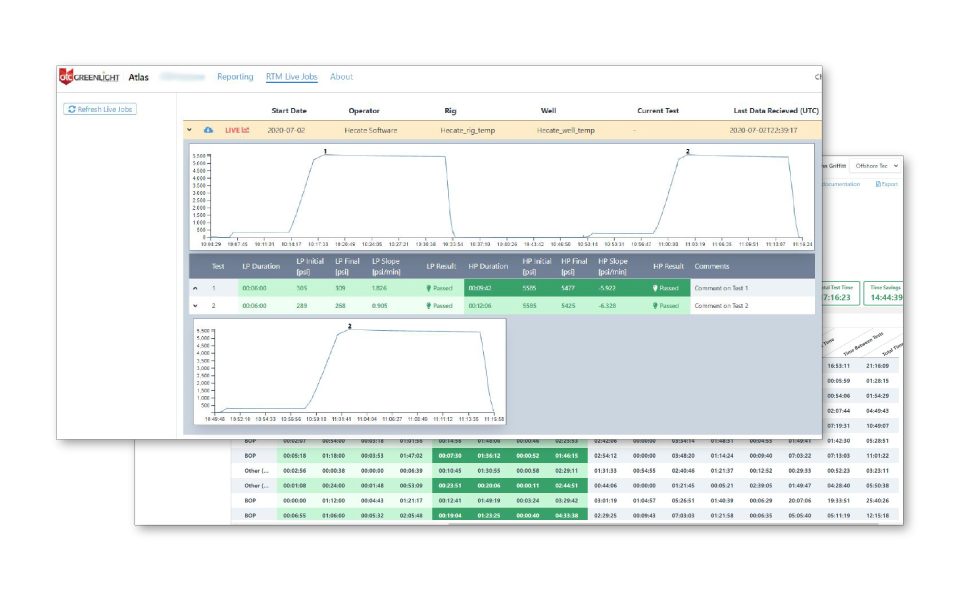- Have any questions?
- +985-727-7400
Rig Selection and Rig Acceptance

Rig Selection and Rig Acceptance
October 22, 2021
Activating a Remote Solution to Digital Pressure Testing
March 18, 2022
This is part two of a two-part series.
Part Two: Rig Acceptance
By Doug Foster
In the first part of this two-part Compliance Corner, the focus was on rig selection. This process involves a reasonably extensive document review from shoreside, but a very limited amount of on-rig time. All that this short duration of rig time permits is a cursory look and a fairly significant photo essay, which can highlight both good and bad conditions. The photos can point to specific areas, conditions or processes of concern, which merit further review.
You could be forgiven for thinking that rig selection and rig acceptance are one and the same. However, rig selection is predicated by the capability of the rig to perform the desired work and availability at the desired time for commencement of the work. At times, there may be several rigs that meet these criteria. Acceptance, on the other hand, may be based on any number of factors such as age, condition of structure and equipment, motion characteristics, historical performance of crews and equipment, regulatory certification status and daily rates, to name just a few.
All drilling contractors should have the following items addressed in their internal procedures, to ensure safety, efficiency and consistency of operations, as well as regulatory compliance, in some instances:
- Clear and detailed safety and skills training for crew members.
- Clear and concise operational procedures.
- Detailed emergency/contingency response plans.
- Detailed maintenance plans for equipment.
- Established spares for routine operations.
- Critical equipment spares levels identified and maintained.
Rig Acceptance Items to be Addressed
The follow-up rig-based acceptance inspection focuses on an agreed series of guidelines, as directed by the client. The guidelines will relate to specific areas and conditions that the client requires feedback and conditional assurance in regards to, including:
- Operator (client) processes and procedural requirements.
- Contractor established processes and procedural guidelines.
- SEMS directives, or other governmental or regulatory stipulations.
- Any maritime certifying authority requirements specific to the vessel.
- API standards, or best practices.
A few of the traditional focus areas tend to be contractor adherence to their established procedures:
- Manning/crew training and certification requirements and compliance status.
- Crew interaction across tour change to gauge both safety focus and quality of operational handover. This includes pre-job, pre-tour and any other process planning sessions that OTC is able to participate in, such as lock out/tag out.
- Basic housekeeping condition as related to safety and pollution considerations as well as availability and condition of related safety equipment and systems and maintenance status.
- Rigging and hoisting process safety, including quality of documentation, certifications, maintenance and use of equipment.
- Confirmation of crew performance across all emergency drill scenarios.
- Condition of ladders (fixed and portable), stairs, safety railings and all related elements of fall protection.
- DROPS safety program equipment status/condition, and documentation accuracy.
While this is not an all-inclusive listing, these are examples of items that should be clearly addressed, periodically inspected, repaired, recertified, or replaced if deficient and fully documented in contractors’ processes.
True Value
All too often, inspectors with checklists are not very experienced in the activities or items represented by their checklists. The checklists are often generic and not specifically tailored to the desires of the client. They tend to be of a yes/no or pass/fail format, with no definitive explanation. OTC’s team of experienced personnel represents a different approach. Though we use a check box format of reporting, our emphasis is more on the quality and detail of the comments associated with the inspection list items. It is our belief that value lies in a clear and definitive assessment, versus the checking of a box. Our myriad inspection tools can be easily adjusted to suit the needs of our clients, to minimize wasted time and ensure quality of focus.
A Collaboration to Improve Safety and Efficiency
Our daily reports include photos and indicate progress for the day, findings of concern, and any corrective action item recommendations. The items for correction are updated daily, when they are addressed or closed out. The number of man days required to perform the inspection will be driven by the extent of scope identified by the client and will vary by rig type. The final inspection document, as soon as approved by the client, is immediately shared with the contractor who is to be inspected. OTC aims not to surprise, criticize, or otherwise discredit anyone, but will report openly and honestly about the conditions and any related concerns identified, with all findings discussed with both client and contractor.
If you missed part one of our Rig Selection and Rig Acceptance feature, take a look now.

